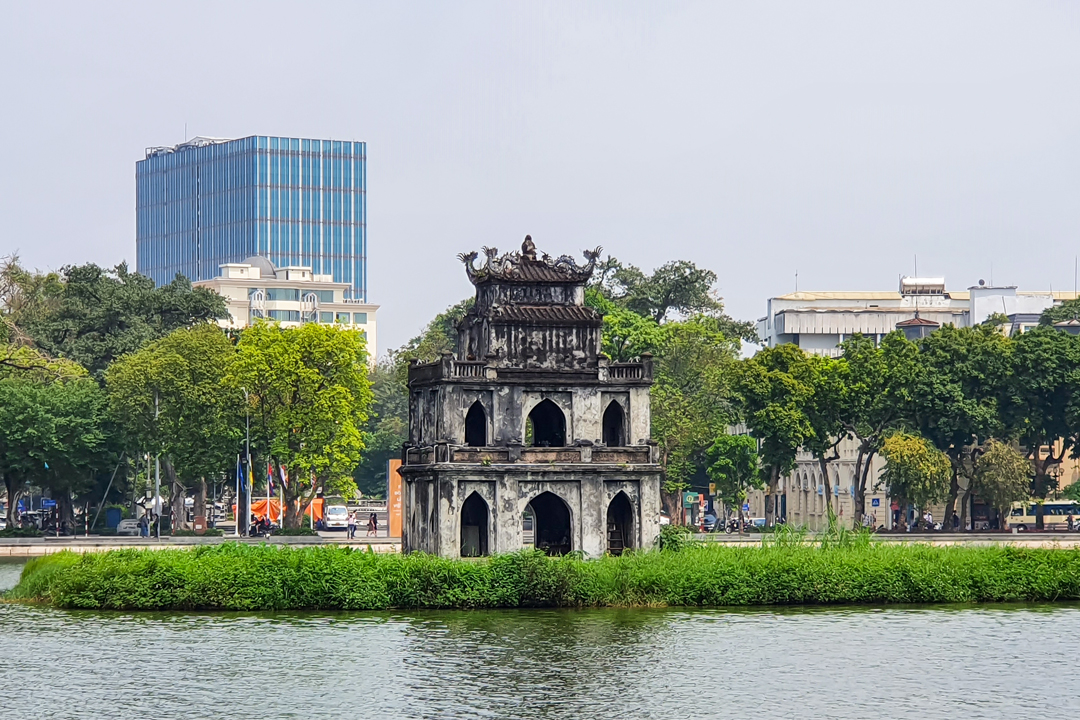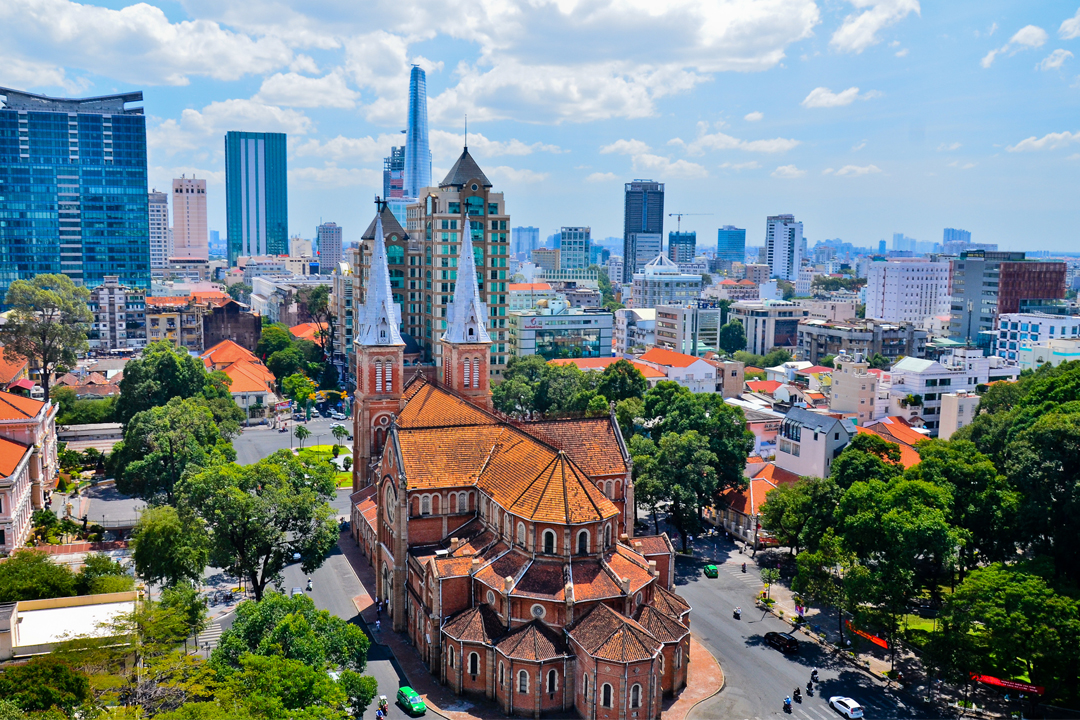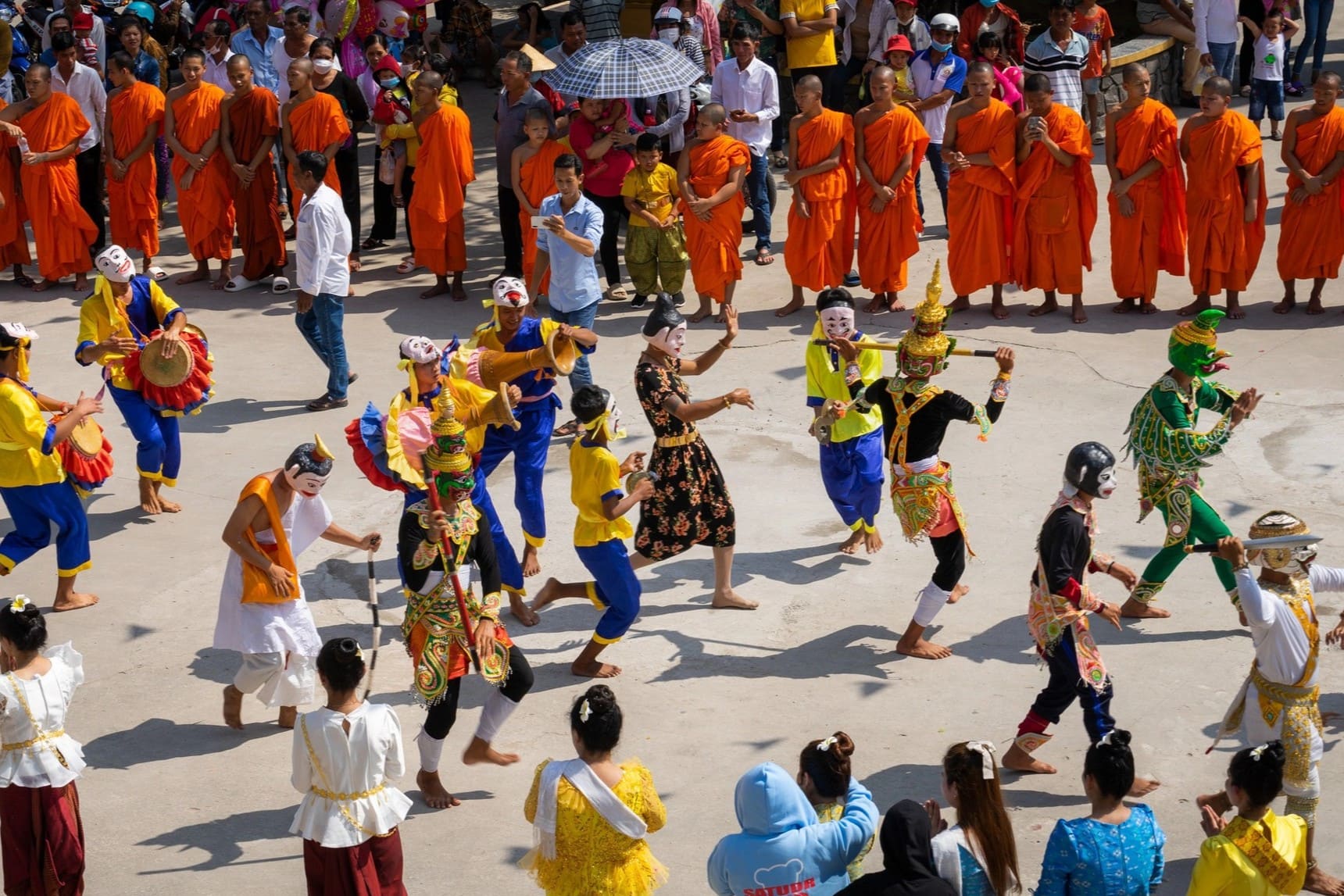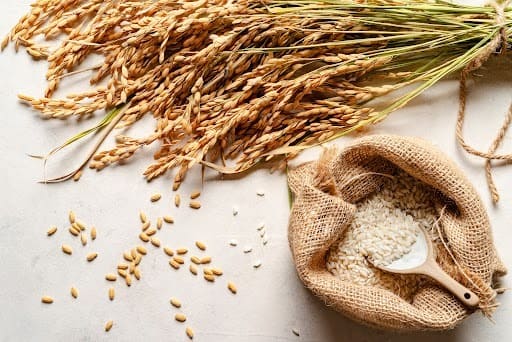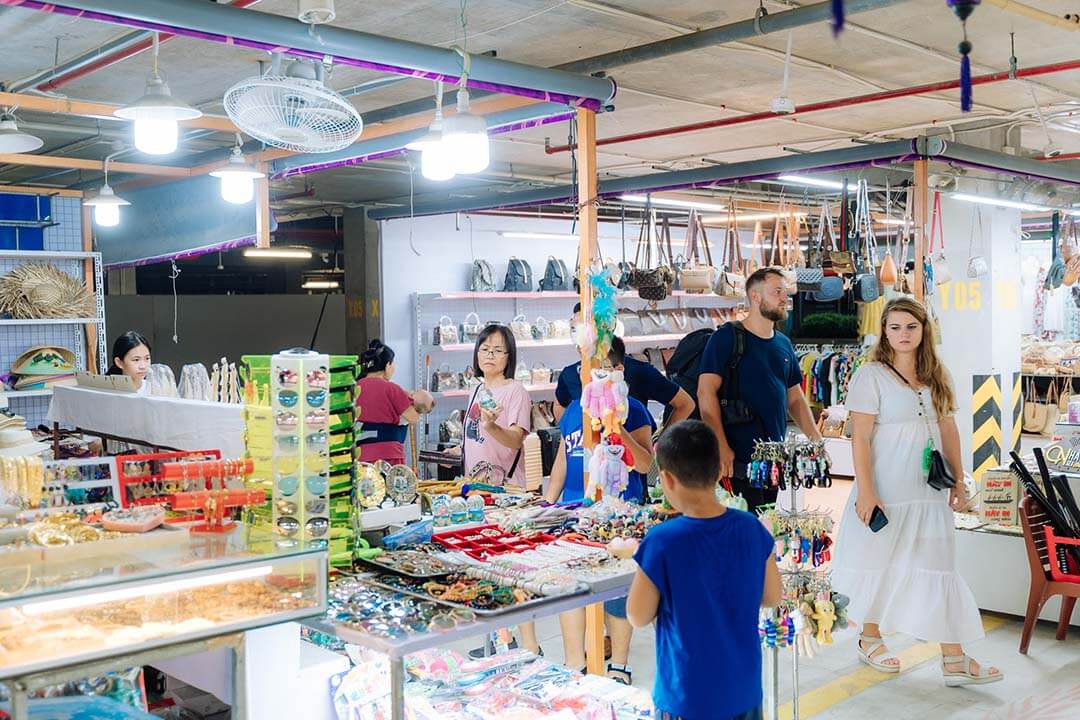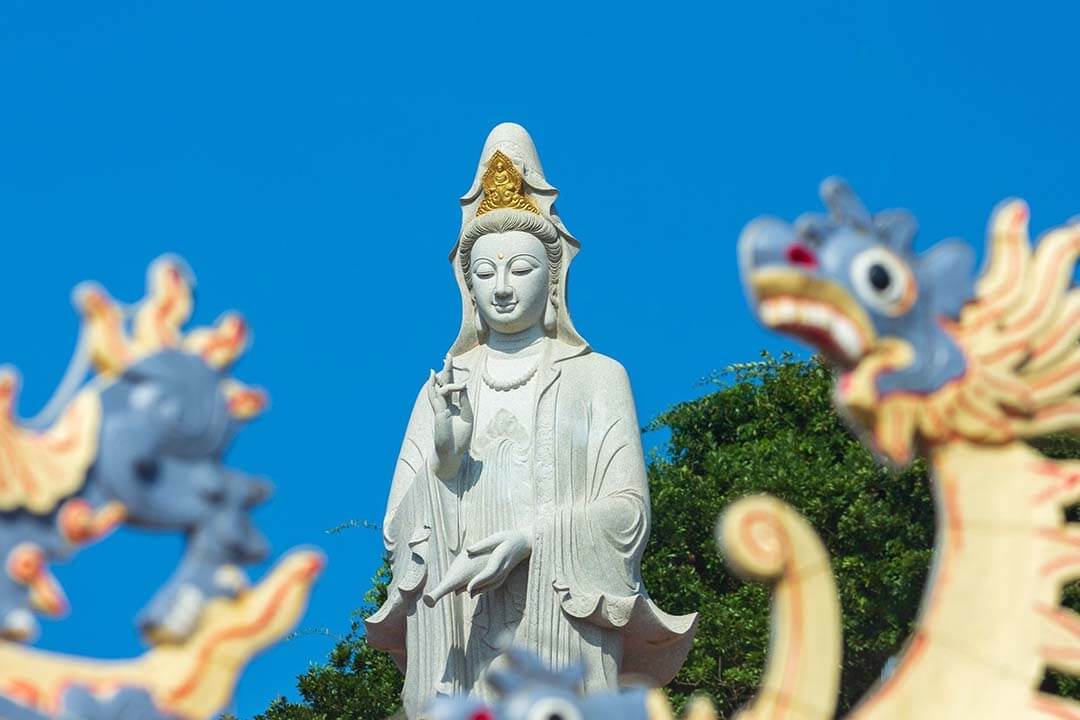Feb - 20 - 2025
Halong Market serves as a dynamic center where culture, commerce, and local flavors intersect, offering travelers a genuine insight into daily life in Ha Long Bay. You can explore an array of fresh seafood, distinctive handicrafts, and flavorful street food, making the market a captivating shopping destination.
Understanding Halong Market’s opening hours and ideal visiting times enhances the overall experience. Early mornings provide access to the freshest produce, while late afternoons create a bustling and energetic atmosphere. A structured shopping guide helps visitors navigate the numerous stalls, secure great bargains, and identify must-buy items such as handcrafted pearl jewelry and local delicacies.
Food enthusiasts will find Halong Market a haven of diverse flavors. Signature street food options include grilled squid and banh cuon (steamed rice rolls), each reflecting Quang Ninh’s rich culinary traditions. Knowing market prices and mastering bargaining techniques allows shoppers to maximize value while maintaining respect for local vendors.
To ensure a seamless visit, this guide answers common questions regarding the best souvenirs, vegetarian food availability, and budget planning. Visiting for the first time or returning for another experience, you can make the most of your time at Halong Market with well-informed decisions.
Halong Market opening hours & the best time to visit
Halong Market's opening hours typically range from early morning until late evening, allowing visitors to explore its vibrant atmosphere at different times of the day. The market usually opens around 6:00 AM and operates until 9:00 PM, though some vendors, especially those selling fresh seafood and produce, start as early as 4:30 AM. This schedule provides ample opportunity for tourists to enjoy shopping, dining, and cultural immersion at their convenience.
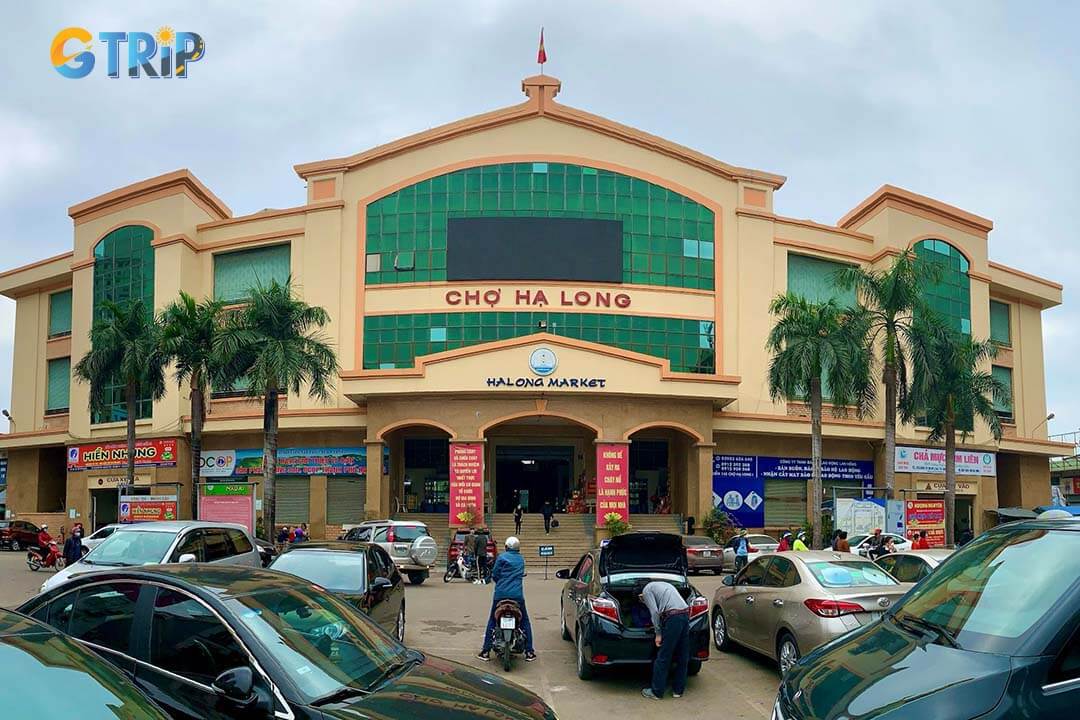
Halong Market opens early and runs late, offering a dynamic shopping and cultural experience throughout the day
The best time to visit Halong Market
The best time to visit Halong Market largely depends on what you want to experience:
- Early morning: Ideal for fresh seafood lovers and local produce seekers. Fishermen bring in their latest catch, and the market is bustling with locals selecting the best ingredients for the day. Prices are often lower in the morning due to fresh stock arrivals, making this the perfect time for budget-conscious shoppers.
- Midday: While this period offers a quieter experience, it is also the hottest time of the day, especially in summer. Many food vendors begin preparing lunch, making it a great time to explore local street food options and sample traditional Vietnamese dishes.
- Late afternoon: This is when the market is most vibrant, with tourists and locals mingling. If you are looking for souvenirs or handcrafted goods, this is the best time to bargain and compare prices across different stalls. Vendors are more open to negotiations, especially as closing time approaches.
Seasonal considerations for visiting Halong Market
If you are planning a trip based on the best weather conditions, consider visiting during cooler months like October to April when temperatures are more comfortable for market exploration. However, if you visit during peak summer months like June to August, expect higher humidity and more tourists. For month-specific insights on Halong Bay’s seasonal weather, check out our detailed guides on Halong Bay in October or Halong Bay in April. To make the most of your shopping experience, knowing what to buy and how to bargain is essential that save more money for your journey. Up next, our shopping guide for Halong Market will provide expert tips on securing the best deals and uncovering unique local products.
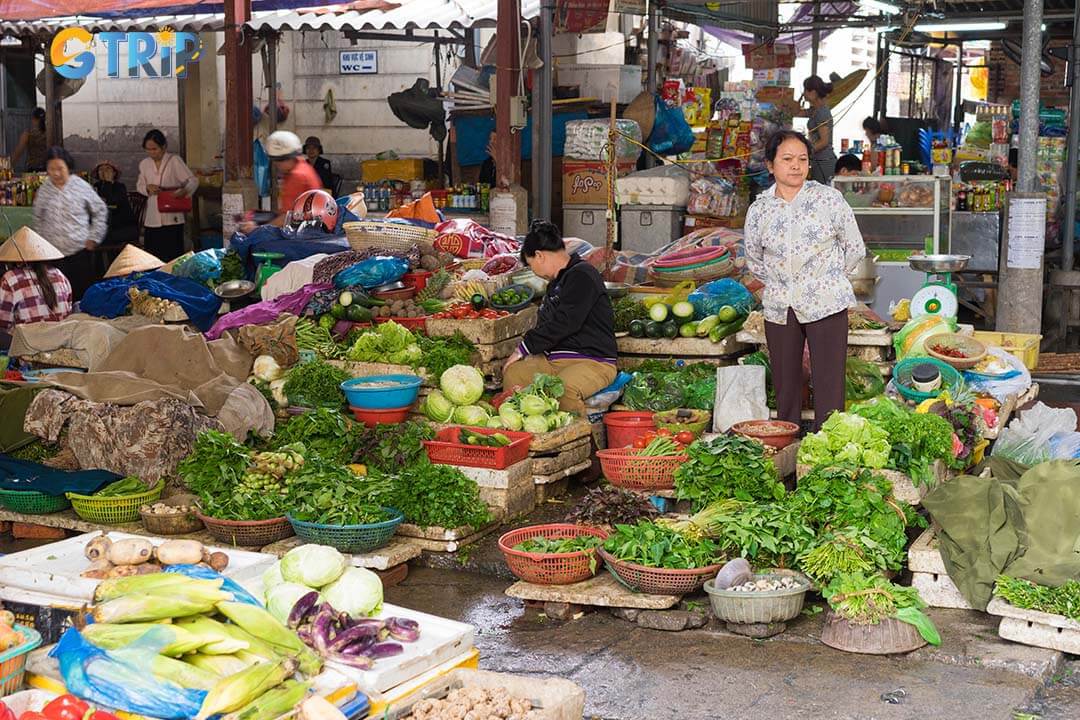
Visit Halong Market from October to April for cooler weather, and follow our guide for the best shopping tips
Shopping guide for Halong Market
Halong Market shopping guide is essential for anyone looking to explore the diverse products available, from fresh seafood to handcrafted souvenirs. The market offers a vibrant shopping experience, blending local culture with high-quality goods.
Souvenirs and local specialties
Shopping at Halong Market is an opportunity to bring home a piece of Vietnam’s coastal charm. Some of the most sought-after items include:
- Dried seafood - Squid, shrimp, and fish are popular choices, often vacuum-sealed for easy transport.
- Traditional Vietnamese conical hats - A cultural symbol that makes for a lightweight and practical souvenir.
- Bamboo and rattan handicrafts - Beautifully woven baskets, trays, and furniture items showcasing local craftsmanship.
- Local herbal medicines - Various dried herbs and medicinal teas that locals swear by for their health benefits.
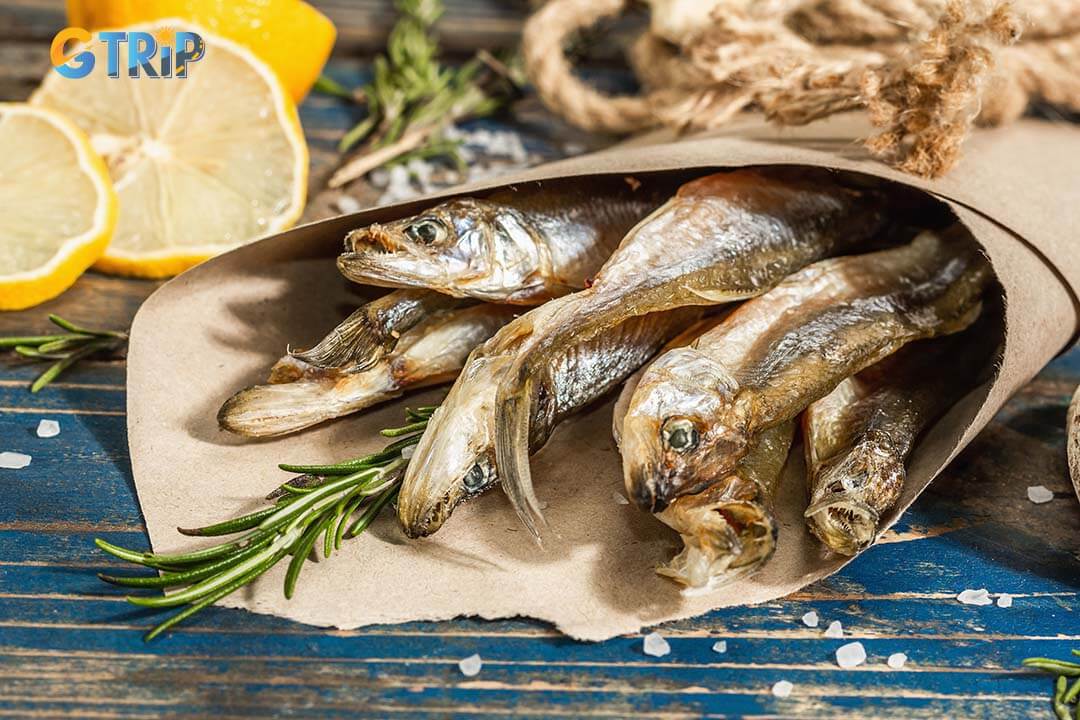
Discover unique souvenirs at Halong Market, from dried seafood to handcrafted bamboo and traditional conical hats
Tips for navigating Halong Market
To make the most of your visit, keep these tips in mind:
- Arrive early - The best time to visit is in the morning when fresh seafood and produce are at their peak.
- Bargain wisely - Haggling is expected, but keep it respectful. A friendly smile and a bit of patience can go a long way in getting a better deal.
- Check product quality - Especially for dried seafood and handcrafted goods, inspect items before purchasing.
- Bring cash - While some vendors accept digital payments, cash is preferred.
After a fulfilling shopping experience, the next exciting step is exploring Halong Market’s street food. Here, you can indulge in authentic Vietnamese flavors at the heart of the bustling marketplace.
Best street food in Halong Market
Exploring Halong Market street food is an essential experience for food lovers visiting Halong Bay. This bustling market is home to a variety of local dishes that showcase the region’s rich culinary heritage. Craving fresh seafood, savory snacks, or traditional Vietnamese desserts, the market’s diverse selection caters to all tastes. There are some must-try street foods in Halong Market:
- Cha Muc (Squid cakes) - A specialty of Halong, these golden-brown, deep-fried squid cakes are crispy on the outside and tender inside. They pair perfectly with sticky rice or a light dipping sauce.
- Banh cuon cha muc (Steamed rice rolls with squid cake) - Unlike the typical version of “banh cuon”, Halong’s variation includes finely chopped squid, adding a unique flavor and texture.
- Hau nuong mo hanh (Grilled oysters with scallion oil) - Freshly caught oysters are grilled over charcoal and topped with scallions, peanuts, and a dash of fish sauce, delivering a smoky and rich taste.
- Bun be be (Mantis shrimp noodle soup) - A comforting bowl of broth filled with fresh mantis shrimp, rice noodles, and fragrant herbs.
- Sa sung chien gion (Fried peanut worms) - A local delicacy known for its crispy texture and umami-rich flavor. It is often enjoyed as a snack with a cold beer.
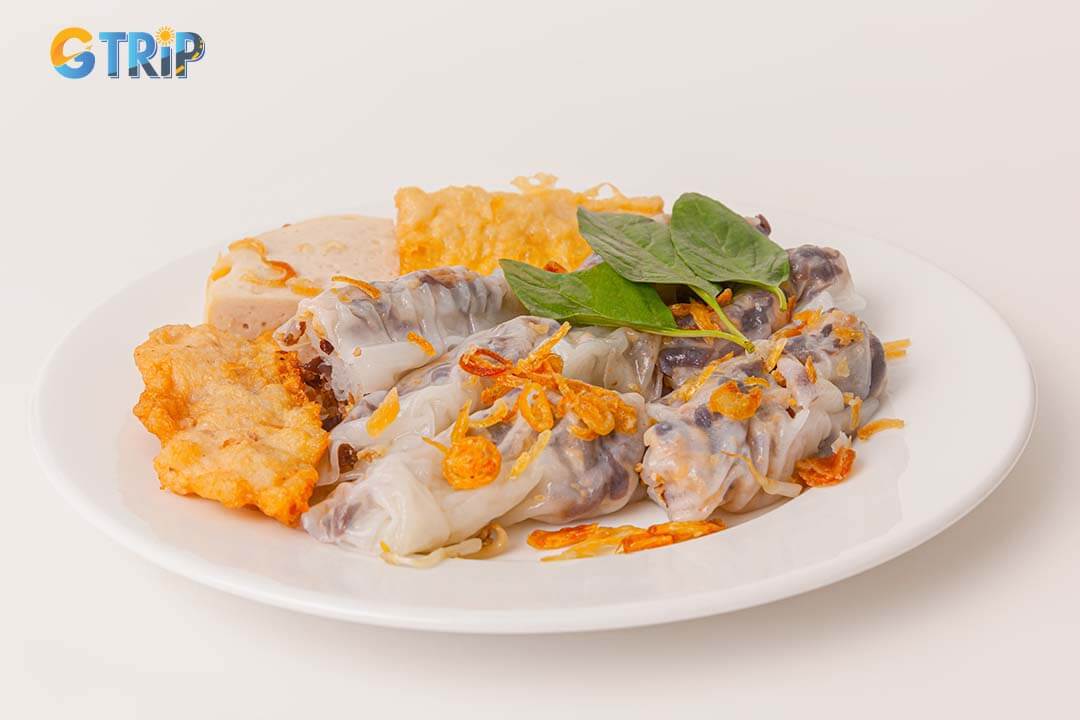
http://shutterstock.com/vi/image-photo/banh-cuon-cha-muc-ha-long-2551841613
Explore Halong Market’s street food scene with must-try local dishes like squid cakes, grilled oysters, and mantis shrimp noodle soup
Street food prices in Halong Market are generally affordable, with most dishes ranging from 30,000 to 100,000 VND per portion. Bargaining is not common for food, but vendors might offer slight discounts for larger orders. Cash is the preferred payment method, although some vendors accept digital payments.
For those looking to explore more of Ha Long Bay’s food scene beyond the market, check out Ha Long Bay Food for an extensive guide to must-try dishes and dining spots. The next section will dive into prices and bargaining tips at Halong Market, which help you save money for your trip.
Prices and bargaining tips at Halong Market
Halong Market prices can vary depending on the type of product, vendor, and your bargaining skills. Fresh seafood, local handicrafts, and street food are among the most popular purchases. Here’s a breakdown of price ranges to help you plan your shopping budget:
- Fresh seafood: Prices fluctuate based on the season, but expect to pay around 300,000 - 800,000 VND (12 - 32 USD) per kilogram for high-quality options like squid, shrimp, or fish. If you want seafood prepared on-site, some stalls charge an additional 50,000 - 100,000 VND (2 - 4 USD) for cooking services.
- Dried seafood & local specialties: Popular items like dried squid, fish, and shrimp range from 200,000 - 500,000 VND (8 - 20 USD) per kilogram, depending on the variety and quality.
- Handicrafts & souvenirs: Traditional bamboo products, pearl jewelry, and embroidered textiles are available from 50,000 - 500,000 VND (2 - 20 USD), with high-end pearl necklaces going up to 2,000,000 VND (80 USD) or more.
- Street food: Halong Market is famous for dishes like grilled oysters (30,000 - 50,000 VND per piece/1.20 - 2 USD) and bánh cuốn chả mực (steamed rice rolls with squid sausage), which usually cost around 50,000 - 80,000 VND (2 - 3 USD) per portion.
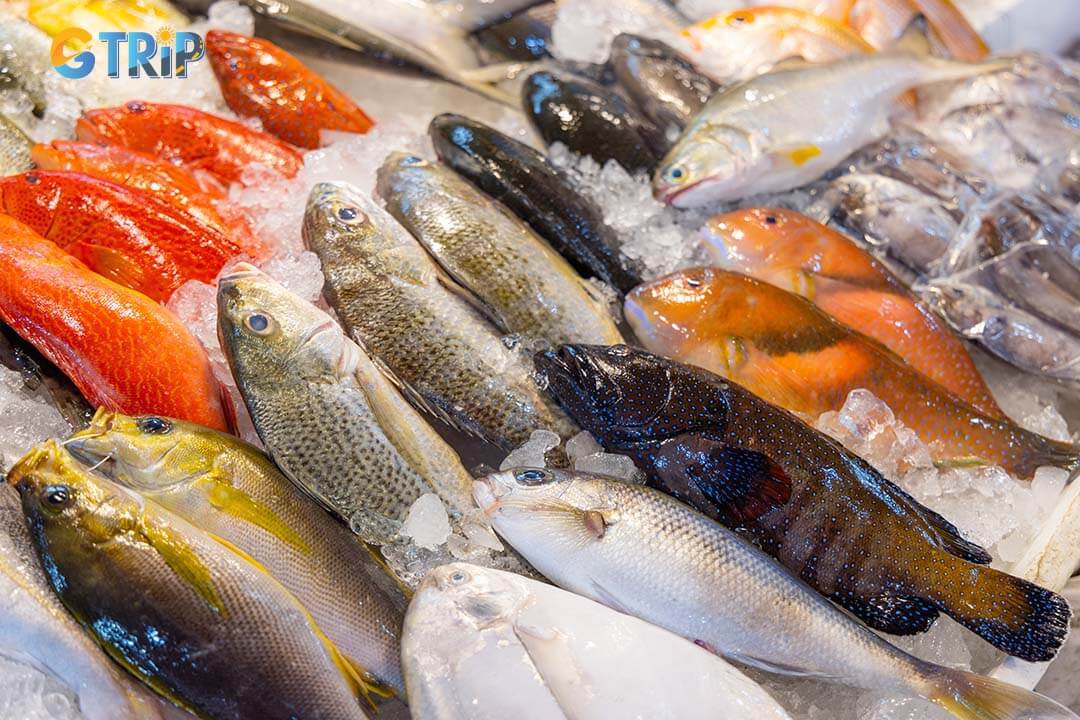
Halong Market prices vary by product and vendor, with seafood, handicrafts, and street food offering options for every budget
Bargaining tips for the best deals
Bargaining is a common practice at Halong Market, especially for non-fixed-price items like handicrafts and dried seafood. Here’s how to get the best deals:
- Start low, but be reasonable: Vendors often quote higher prices to tourists. Begin negotiations at 60 - 70% of the asking price and adjust based on their response.
- Compare prices: Check multiple stalls before making a purchase. Some sellers offer similar products at significantly different rates.
- Buy in bulk: Purchasing multiple items from the same vendor can help secure better discounts.
- Be polite but firm: A friendly attitude improves your chances of getting a fair deal. If a vendor refuses to lower the price, consider walking away many will call you back with a better offer.
- Use cash in small denominations: While many vendors accept digital payments, cash is preferred, and having smaller bills (50,000 - 200,000 VND notes/2 - 8 USD) makes transactions smoother.
Comparing Halong Market vs Bai Chay Market
When exploring Ha Long Bay, Halong Market and Bai Chay Market stand out as the two most popular shopping destinations. While both offer a diverse shopping experience, each caters to different needs and preferences. Below is a detailed comparison to help visitors decide which market suits them best.
1. Location & accessibility
Halong Market is located in the heart of Hon Gai, the administrative center of Ha Long City. It primarily serves locals, making it a great place to experience authentic Vietnamese shopping culture. The market is easily accessible by public transport, taxis, or motorbike rentals.
On the other hand, Bai Chay Market is situated in the tourist-heavy Bai Chay area, closer to hotels, resorts, and Halong Bay’s main attractions. This makes it more convenient for you staying in Bai Chay who want a quick shopping stop without venturing too far.
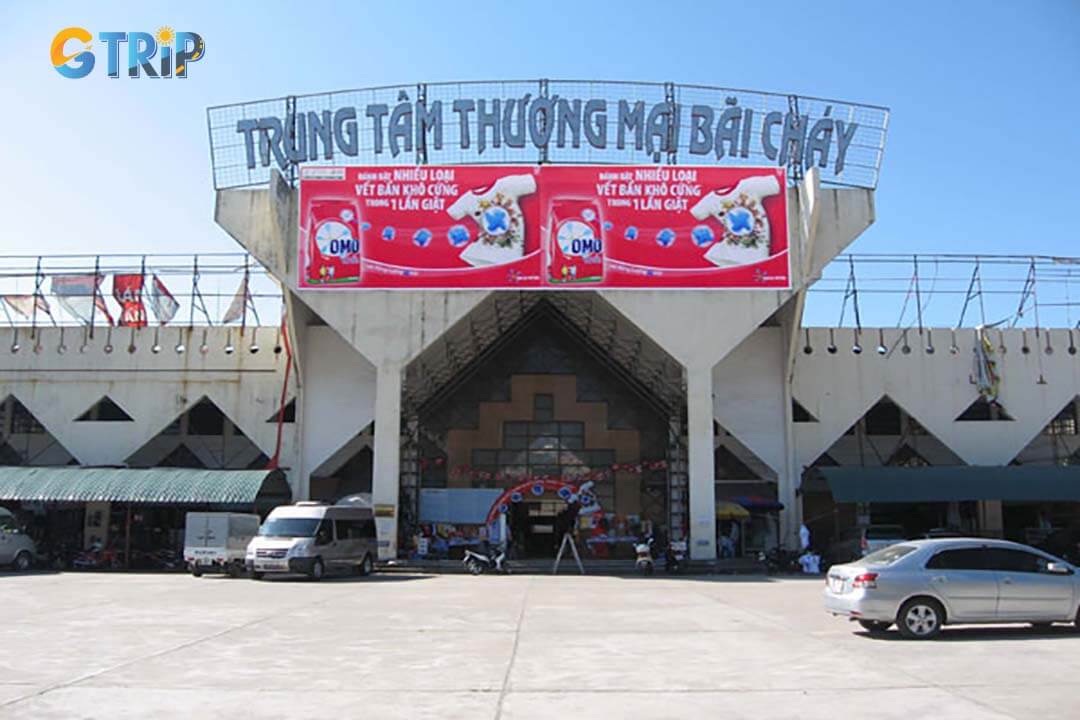
Halong Market in Hon Gai offers an authentic local experience, while Bai Chay Market caters to tourists with a convenient location
2. Product variety & pricing
- Halong Market: Known for its fresh seafood, local produce, and traditional handicrafts, this market is the go-to place for budget-friendly shopping. Since it caters mainly to locals, prices are generally lower, and bargaining is expected. A kilo of fresh shrimp, for example, can range from 200,000 - 300,000 VND (8 - 12), while dried squid costs around 500,000 VND (USD 20) per kilo.
- Bai Chay Market: Focused more on tourists, the market offers souvenirs, fashion items, and packaged seafood. Prices are generally higher, but convenience and accessibility make up for the cost. Expect to pay 300,000 - 500,000 VND (12 - 20 USD) for similar seafood options.
3. Atmosphere & shopping experience
Halong Market offers a more traditional, bustling vibe with narrow aisles filled with vendors selling fresh produce, dried goods, and clothing. The experience feels more local, and haggling is part of the shopping culture.
Bai Chay Market, in contrast, is designed to accommodate tourists with wider walkways, a more organized layout, and English-speaking vendors. It’s less chaotic, making it a better option for those who prefer a relaxed shopping experience.
4. Food options
If you're a food lover, both markets have plenty to offer. Halong Market has small street food stalls selling local delicacies like grilled squid and steamed rice rolls with squid cake. Bai Chay Market, on the other hand, features more restaurants and food courts serving seafood hotpots and Vietnamese BBQ, ideal for a sit-down meal.
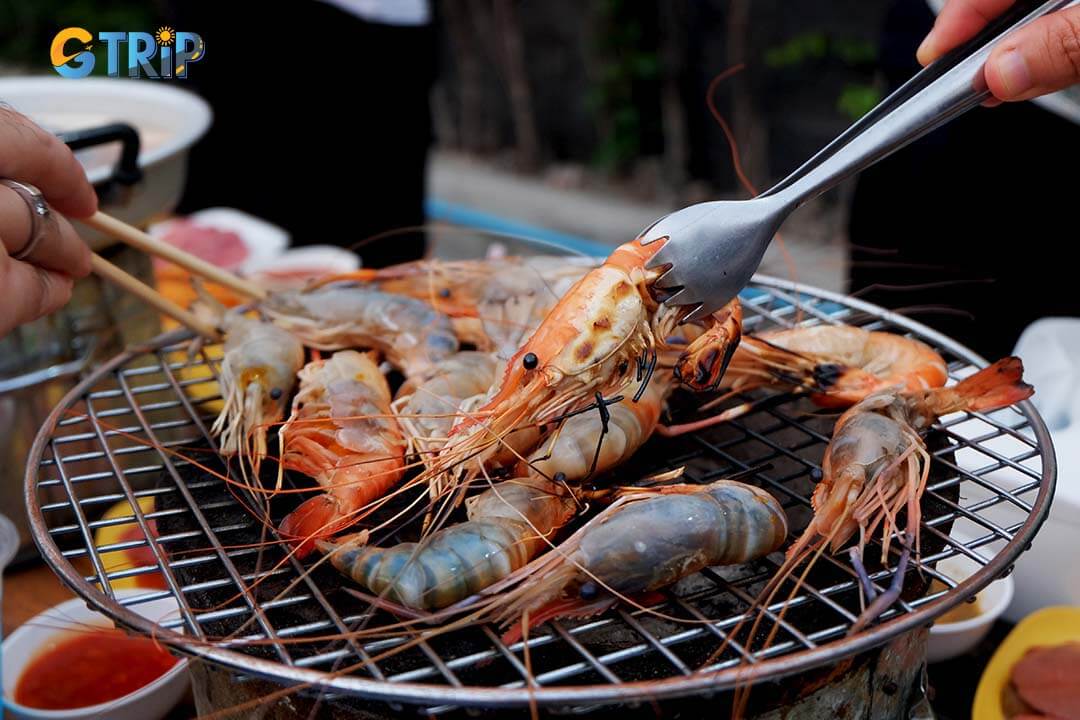
Halong Market offers street food delights, while Bai Chay Market provides restaurants and food courts for a full dining experience
5. Best market for tourists?
- Choose Halong Market if you want an authentic Vietnamese shopping experience, lower prices, and a chance to interact with locals.
- Choose Bai Chay Market if you prefer a tourist-friendly environment with easier communication, a wider variety of souvenirs, and convenient access.
If you visit Halong Market or Bai Chay Market, each has its unique charm, making them both worthwhile stops. Exploring both allows you to experience a diverse range of local products and flavors.
FAQs - Common questions about Halong Market
Halong Market offers more than shopping it’s a cultural experience showcasing local products and cuisine. This guide answers key questions to help you navigate and make the most of your visit.
What are the best souvenirs to buy at Halong Market?
Halong Market is an excellent place to find authentic Vietnamese souvenirs. Among the most popular items are dried seafood like squid and shrimp, which are fresh and packed for easy transport. Traditional Vietnamese silk scarves, embroidered textiles, and ceramic products also make great keepsakes. For those interested in unique local crafts, coal figurines carved from Quang Ninh’s famous coal mines are a speciality item.
Are there vegetarian food options available in Halong Market?
Yes, while Halong Market is famous for its seafood, it also offers a variety of vegetarian options. Many vendors sell fresh fruits, tropical snacks, and local vegetarian dishes such as stir-fried noodles with vegetables, tofu-based dishes, and steamed rice cakes. Street food stalls often have vegetarian versions of popular Vietnamese dishes. For travelers looking for a full vegetarian meal, it’s best to explore nearby eateries or visit Indian restaurants in Halong Bay, which typically have a wide selection of plant-based dishes.
How much should I budget for shopping in Halong Market?
Your budget for Halong Market shopping will depend on what you plan to buy. Basic souvenirs like keychains, magnets, and small handicrafts range from 20,000 to 100,000 VND. For high-quality silk, pearl jewelry, or handcrafted ceramics, expect to pay 200,000 to 2,000,000 VND, depending on the material and craftsmanship. Seafood prices vary by freshness and type, with dried squid around 500,000 VND/kg. Polite bargaining helps secure a fair deal.
Is Halong Market suitable for tourists who don’t speak Vietnamese?
Yes, many vendors in Halong Market are accustomed to foreign visitors and can communicate in basic English, especially regarding prices and product descriptions. However, having a translation app or learning a few essential Vietnamese phrases can be helpful. Most stalls use calculators to show prices, making transactions easier. If you need assistance navigating the market, hiring a local guide or taking a market tour can be a great way to enhance your experience.
What is the best way to get to Halong Market?
Halong Market is centrally located in Bai Chay, making it accessible by various transportation methods. If you're coming from Hanoi, the most convenient way is by bus or private car, taking around 2.5 to 3 hours. Within Ha Long City, taxis and ride-hailing services like Grab and XanhSM are widely available. For those staying in the area, renting a bicycle or motorbike can be a great way to explore the market and nearby attractions. If you're visiting from Gia Luan Harbour on Cat Ba Island, taking a ferry to Ha Long and then a taxi to the market is an option.
Exploring Halong Market is an essential experience for visitors looking to immerse themselves in the local culture, cuisine, and shopping scene. From fresh seafood and handcrafted souvenirs to flavorful street food, the market offers a dynamic atmosphere that captures the essence of Ha Long Bay.
For the best experience, knowing the opening hours, understanding local prices and bargaining tips, and exploring nearby attractions can enhance your visit. Shopping for unique gifts, sampling regional delicacies, or comparing Halong Market vs. Bai Chay Market, this guide equips you with everything you need.
If you're planning a trip beyond Halong Market, consider exploring the stunning landscapes, limestone karsts, and cultural sites that make this region famous. To make the most of your journey, check out our curated Ha Long Bay tours with GTrip - Vietnam Travel Agency.

